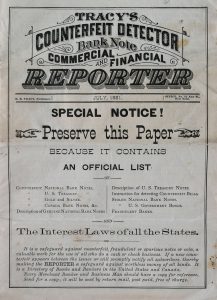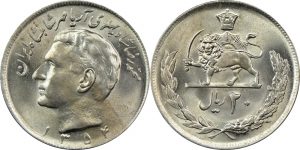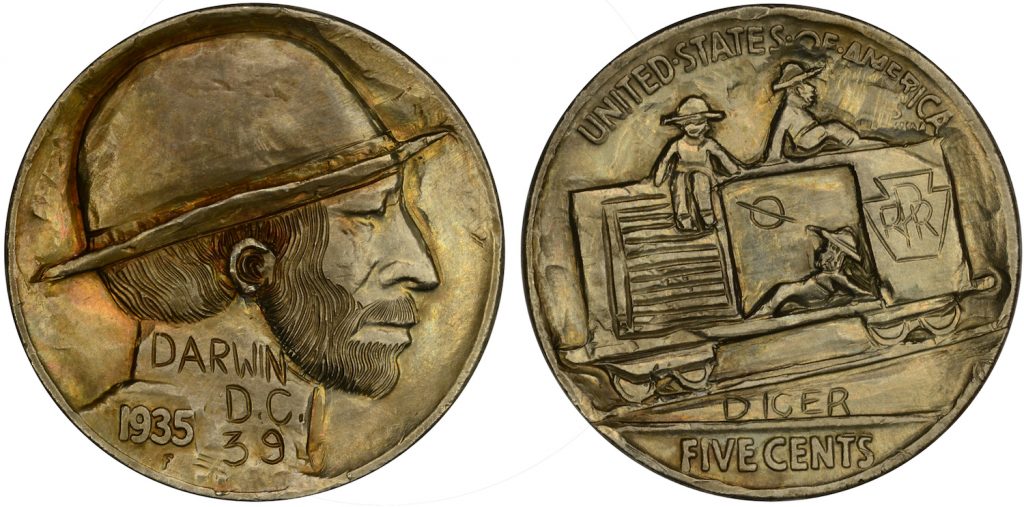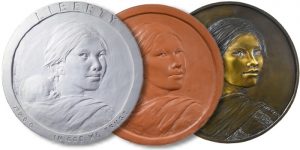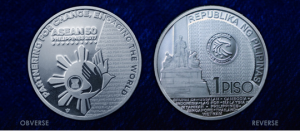Jul 26, 2018 | coins, history, news
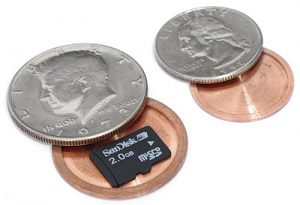
Hollow Spy Coins
(Image courtesy of ThinkGeek)
DSS is blaming an editing error with the item appearing in the report.
Although the release said the story was not true, The Associated Press quoted agency spokeswoman Martha Deutscher saying, “What’s in the report is true. This is indeed a sanitized version, which leaves a lot of questions.”
Later in March of 2009, someone had sent a link to an online merchant that was selling hollow spy coins. They were offering hollowed out quarters or half-dollars with enough room for a very small memory card. The coins are advertised to come with an unlocking ring and are “indistinguishable from regular coins when closed.”
These coins are no longer listed on that company’s website. However, if you are interested in owning your own spy coin, you can use any search engine and search for “hollow spy coins.”
I will probably not buy one. I would be afraid to carry the quarter for fear of accidentally spending it. But keeping a hollow half-dollar as a pocket piece with some “secret” information inside of it could be fun.
Original DSS Press Release
The “Defense Security Service Report Statement on Canadian Coins Incorrect, 01/12/2007” press release is no longer available on the DSS website. The following text was found on the Internet Archive Wayback Machine:
A statement in the 2006 Defense Security Service Technology Collection Trends in the U.S. Defense Industry report which claimed radio frequency transmitters were discovered embedded in Canadian coins is not true, according to DSS officials.
This statement was based on a report provided to DSS. The allegations, however, were found later to be unsubstantiated following an investigation into the matter.
According to DSS officials, the 2006 annual report should not have contained this information. The acting director of the DSS directed an internal review of the circumstances leading up to the publication of this information to prevent incidents like this from reoccurring.
The 2006 DSS Technology Collection Trends in the U.S. Defense Industry report was published by DSS in June 2006. As part of its oversight responsibilities under the National Industrial Security Program, the DSS receives reports from U.S. cleared defense industry to enhance overall security awareness in cleared industry.
Jul 25, 2018 | Canada, coins, foreign, news, other
With the outcry over the tariffs on Canadian goods being called a “National Security” issue, here is something from January, 2007 to consider.
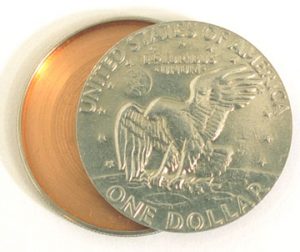
This photo released by the Central Intelligence Agency shows a hollow container, fashioned to look like an Eisenhower silver dollar, which is still used to hide and send messages, or film, without being detected. It is similar to the Canadian coin that was found on some U.S. contractors. Because it resembles ordinary pocket change, it is virtually undetectable as a concealment device.
(Image courtesy of the CIA via the AP)
Reports confirm that an unidentified Canadian coin was hollowed out and its metal replaced with the RFID transmitter. The coins were “planted” on three security cleared contractors between October 2005 and February 2006 as they traveled through Canada.
RFID transmitters can be used to track the movements of those carrying the coins. “You might want to know where the individual is going, what meetings the individual might be having and, above all, with whom,” said David Harris, a former Canadian Security Intelligence Service (CSIS) officer. “The more covert or clandestine the activity in which somebody might be involved, the more significant this kind of information could be.”
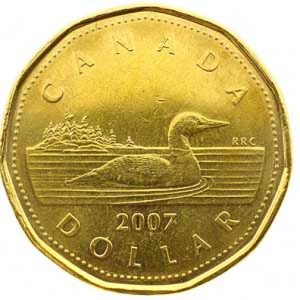
Reverse of a 2007 Canada Dollar nicknamed “The Loonie” because of the image of a common loon on its reverse.
(Image courtesy of the Carlyle Observer).
Although the type of RFID chip has not been identified, experts are saying that the transmitter in a coin would have a limited transmission range. It is said that the metal casing could constrain its range. Some of the technologies do have limited transmission ranges, but there are versions of the technology that could be tracked for a few kilometers.
“I’m not aware of any (transmitter) that would fit inside a coin and broadcast for kilometers,’ said Katherine Albrecht, an activist who believes such technology carries serious privacy risks. “Whoever did this obviously has access to some pretty advanced technology.”
The risk of the carrier spending the coin is great. but the ability to track a potential target would be a risk that spies might take. As our Canadian friends search their change, they may want to see if the coins have been hollowed and contain an RFID chip. That would be an interesting find!
The original article can be read
here.
Jul 24, 2018 | coins, dollar, legislative
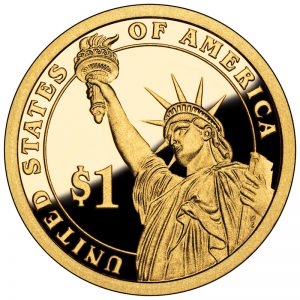 On July 20, 2018, the president signed the American Innovation $1 Coin Act to become Public Law No. 115-197.
On July 20, 2018, the president signed the American Innovation $1 Coin Act to become Public Law No. 115-197.
Beginning in 2019, there will be four dollar coins issued where the obverse will be “a likeness of the Statue of Liberty extending to the rim of the coin and large enough to provide a dramatic representation of Liberty.” The reverse will be emblematic of an innovation, innovator, or a group of innovators significant to that state or territory. The dollar coins will use the same Manganese-Brass composition as all dollar coins struck since 2000 with the edge lettering consisting of the year, mintmark, and the national motto E PLURIBUS UNUM.
The American Innovation $1 Coin will be issued in the same order as the 50 State Quarter Program, the order the states entered the union, followed by the District of Columbia and U.S. Territories.
The order will be as follows:
2019
- Delaware
- Pennsylvania
- New Jersey
- Georgia
2020
- Connecticut
- Massachusetts
- Maryland
- South Carolina
2021
- New Hampshire
- Virginia
- New York
- North Carolina
2022
- Rhode Island
- Vermont
- Kentucky
- Tennessee
2023
- Ohio
- Louisiana
- Indiana
- Mississippi
2024
- Illinois
- Alabama
- Maine
- Missouri
2025
- Arkansas
- Michigan
- Florida
- Texas
2026
- Iowa
- Wisconsin
- California
- Minnesota
2027
- Oregon
- Kansas
- West Virginia
- Nevada
2028
- Nebraska
- Colorado
- North Dakota
- South Dakota
2029
- Montana
- Washington
- Idaho
- Wyoming
2030
- Utah
- Oklahoma
- New Mexico
- Arizona
2031
- Alaska
- Hawaii
- District of Columbia
- The Commonwealth of Puerto Rico
2032
- Guam
- American Samoa
- The U.S. Virgin Islands
- The Northern Mariana Islands
Happy collecting!
Jul 22, 2018 | coins, commemorative, legislative, news
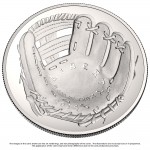
Winning design for the obverse of the 2014 Baseball Hall of Fame commemorative. (Image courtesy of the U.S. Mint)
On April 15, 1947, Jackie Robinson debuted for the National League’s Brooklyn Dodgers and on July 5, 1947, Larry Doby integrated the American League with the Cleveland Indians.
This past week, Senators Time Scott (R-SC) and Cory Booker (D-NJ) introduced the bill (S. 3239) in the Senate on behalf of the National Baseball Hall of Fame. Next week, Representatives Roger Williams (R-TX) and Cedric Richmond (D-LA) will likely introduce a similar bill in the House of Representatives.
S. 3239: A bill to require the Secretary of the Treasury to mint commemorative coins in recognition of the 75th anniversary of the integration of baseball.
Read twice and referred to the Committee on Banking, Housing, and Urban Affairs. — Jul 18, 2018
To keep with the theme of making something different, such as the 2014 coins being curved, the bill calls of the new commemorative to be square and the common reverse to resemble a baseball diamond. This should be somewhat easy to accomplish since a real baseball diamond is nothing more than a square tilting on its corner.
For the obverse of the coin, the U.S. Mint is supposed to hold an open competition for artists to provide their suggestion for a design “emblematic of the integration of the game of baseball”
There will be the usual three-coin program consisting of no more than 50,000 $5 gold coins, 500,000 silver dollars, and 750,000 clad half-dollars. Surcharges received from the sale of the coins will benefit the National Baseball Hall of Fame and Museum and the Jackie Robinson Foundation.
And now the news…

July 15, 2018
The oldest coins in the find were minted during the reign of Hadrian (117-138 AD); the youngest come from the last years of the reign of Septimius Severus (beginning of the 3rd century AD). "All coins were found very close to each other in the Roman fort Apsaros" – told PAP Dr. 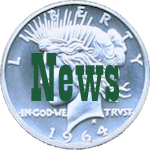 → Read more at scienceinpoland.pap.pl
→ Read more at scienceinpoland.pap.pl

July 18, 2018
In the town of Clayton, no good deed goes unnoticed.  → Read more at wral.com
→ Read more at wral.com

July 18, 2018
ONE of the “finest known” examples of Australia’s earliest coin is expected to fetch more than $300,000 when it goes up for auction in Sydney next week.  → Read more at news.com.au
→ Read more at news.com.au

July 19, 2018
A wreck involving an armored car left coins strewn across Interstate 40 in Tennessee, police said.  → Read more at tennessean.com
→ Read more at tennessean.com

July 19, 2018
The U.S. could issue commemorative coins on the 75th anniversary of Robinson breaking baseball's color barrier with the Dodgers.  → Read more at latimes.com
→ Read more at latimes.com

July 20, 2018
SCRANTON — When churchgoers drop their loose change into collection bins at St. Ann’s Monastery and Basilica, whether during the novena or on regular worship days, items other than U.S. currency sometimes gets mixed in.  → Read more at thetimes-tribune.com
→ Read more at thetimes-tribune.com

July 20, 2018
Police in Berlin have seized 77 apartments, homes and pieces of land belonging to the Remmo family as they charged 16 members with money laundering over the gold coin heist.  → Read more at dailymail.co.uk
→ Read more at dailymail.co.uk

July 21, 2018
Friday demonstrations of the Nevada State Museum’s historic Coin Press No. 1 have proven so popular this summer that museum officials are extending the program through Labor Day weekend  → Read more at nevadaappeal.com
→ Read more at nevadaappeal.com
Jul 21, 2018 | cash, coins, commentary, currency, markets, technology
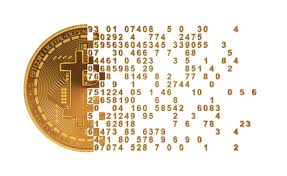 With the discovery of every new technology, there are the inevitable predictions that it will make the old ways obsolete. Although the automobile reduced the reliance on horses, the basics of the internal combustion engine have not changed in over 100 years. Take away the electronics around the engine, the technology increasing the air intake, and cleaning up the exhaust, and you still have an engine block with pistons that go up and down in the classic suck-bang-blow rhythm that was used in the Model T.
With the discovery of every new technology, there are the inevitable predictions that it will make the old ways obsolete. Although the automobile reduced the reliance on horses, the basics of the internal combustion engine have not changed in over 100 years. Take away the electronics around the engine, the technology increasing the air intake, and cleaning up the exhaust, and you still have an engine block with pistons that go up and down in the classic suck-bang-blow rhythm that was used in the Model T.
The latest technology that is being touted as being the doom for physical money, which can also be the end of numismatics, is cryptocurrency.
There are two aspects of cryptocurrency that its fans say are its biggest strength. First, it is not bound by the traditional means of generating wealth. You can think of cryptocurrency as digital gold. It is mined using computers and a lot of complex arithmetic to generate one unit of the currency, sometimes referred to as a bitcoin. Like physical gold, there is some work required to mine for these bitcoins. It lies in the ability to create a computing environment capable of performing these intensive mathematical operations. You may not be panning for gold but you might spend as much on equipment and travel.
The other aspect about cryptocurrency is that the blockchain technology allows for both anonymous and secure transactions. Think of the blockchain as a giant ledger that is copied wherever bitcoin is accepted with regular updates. There is no single source that could control the ledger nor is there a single point of failure.
However, both its strengths are its greatest weaknesses.
While the value of money is regulated by their respective government there are no blockchain regulations. There is no regulation on the number of generated bitcoins but is arbitrarily set by the creator of the cryptocurrency. There is no guarantee of value as a state-sponsored currency. Bitcoin investors are betting on the value of electronics and math, something many of these investors does not fully understand.
The blockchain also provides its own problems. In order to use the cryptocurrency, you have to have your own copy of the ledger and be able to pass the information to the party you want to pay. Think about having a checkbook with everyone’s information. You cannot read the information because it is encrypted but you have to have a copy. Then you need to pay someone. You hand over the checkbook in order to complete the transaction.
Think about the amount of data that would be if the blockchain supported 1,000 people. What would it take to support 1 million people? What if the government decided that everyone would do their business in bitcoin and everyone would have to have a way to deal with the blockchain in order to facilitate payments. How cumbersome will that ledger be if all 325.7 million people in the United States had to carry that around?
Each blockchain is its own entity. While you can trade in bitcoins on the same blockchain, you may have to participate in more than one blockchain if you want to accept bitcoins from several different people. It is like different currencies today. I can go anywhere in the United States and use dollars. But if I wanted to go to Canada, I can either arrange an exchange or find someone who will trade.
Cryptocurrency that has to operate across different blockchains is just like going to Europe and having to change your dollars for euros.
As with anything that is computer-based and managed, there is always the security issues. Blockchains have been hacked. Although most of the hacks are based on compromised passwords, each hack yields millions of dollars in stolen cryptocurrency to the hackers and everyone who then does business with them on the same blockchain.
Eventually, this will lead to a cryptocurrency version of a Bank Note Reporter and Counterfeit Detector as was popular during the broken banknote period. Then it will be followed by a Cryptocurrency Act similar to the Currency Act that ended the broken banknote period proving George Santayana right as we repeat history.
Cryptocurrency is the darling of the technology industry and those in the financial industry that trade in high-risk investments. Even traditional financial services companies are spending a limited amount of risk capital on cryptocurrency investments. However, by all statistics, the number of consumers using cryptocurrency for transactions is less than 1-percent.
If Not Cryptocurrency The What About Credit Cards
Credit and debit cards remain the primary target that proponents of a cashless society use to promote their agenda. However, when faced with the realities of life in the United States, there are three statistics that work against their arguments:
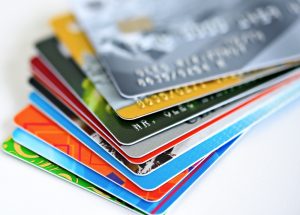
- The Bureau of Engraving and Printing, the printer of United States currency, reports a year-over-year increase in production of just over 4-percent.
- The U.S. Mint, the manufacturer of United States coinage, is reporting a year-over-year increase of 6-percent striking circulating coinage.
- According to CreditCards.com, “In 2013, 20 percent of whites did not have access to a credit card compared with 47 percent of African-Americans and 30 percent of Latinos.”
The primary customer for the Bureau of Engraving and Printing and U.S. Mint is the Federal Reserve. If the Federal Reserve needs the money for its operations, they buy it from these government bureaus. The Federal Reserve only orders what it needs. If it does not need the money, then it is not produced.
Aside from the over 50-percent of the population without access to credit cards, there continues to be a demand for physical currency. Whether the currency is used in a vending machine or to buy other items, cash is still king and shows no sign of slowing.
While there continues to be a demand for the products from the U.S. Mint and Bureau of Engraving and Printing, these bureaus will continue to produce coins and currency giving us more opportunity to collect their products.
Jul 18, 2018 | coins, foreign, nickels
This week’s LOOK BACK is from June 15, 2006. After a club meeting, I was inspired by two of the presentations.
Local coin clubs are a place you can regularly go to talk about coins and numismatics with like-minded collectors. If you have not attended a meeting you should find time to go. You might find that there is a learning experience that can inspire you in your collecting endeavors. One of the reasons I try to ensure I make it to the monthly meeting of my local coin club is because I seem to leave every meeting with an appreciation for something different about the hobby.
Our club encourages members to bring in their monthly finds. A numismatic show-and-tell. This week, Jerry Grzenda, a collector of many different types of coins and a serial exhibitor, showed his collection representing the last century of Iran. Jerry’s presentation included a history of Iran as seen through its coinage. It was a great learning experience and the coins were beautiful. There is something about the style of the Persian language that is intriguing and adds to the aesthetic of the coins.
Another highlight of the meeting was the presentation by Ron Brais about Hobo Nickels. While I have heard about Hobo Nickels, all I knew about them was what I learned in passing. In listening to Ron talk, I learned that the original Hobo Nickels were created between 1913 and 1935 using only Buffalo Nickels because the design had large figures on both sides that could be used as the basis of the design. The copper-nickel coins are also softer than others allowing them to be more easily carved. These elements allowed the carver to make just about any design and usually did. Designs were as varied as the artists who carved them. Hoboes would use the carved nickels to trade for food, shelter, or other favors during their travels.
The most famous Hobo Nickel artist was George Washington “Bo” Hughes. Bo ran away from home at a young age and was befriended by a hobo identified as Bert. After a train yard scuffle, Bert took Bo under his wings, protected him from the tramps and bums and taught Bo how to carve realistic images into the Buffalo nickel. For many years, Bo would ride the rails and carve nickels living the life of the hobo as he looked for work to survive. Bo’s work on Hobo Nickels allowed him to eventually get a job as a craftsman. It lasted until 1957 when he cut his left hand while carving a nickel. At that time Hobo Nickels were no longer popular and Bo just faded away. He died in 1982.
The life and history of George Washington “Bo” Hughes has been immortalized in the book Hobo Nickels by Delma K. Romines (out of print).
Today, the Original Hobo Nickel Society has a number of artist members that are carving images into Buffalo and Jefferson nickels to keep the art alive. Some of the designs are ingenious and beautiful while others are copies of carving on older coins. Modern nickels are made using modern tools that allow the carving to look much cleaner than their older examples. The old methods and tools were not able to make clean lines but it gave them a character that cannot be matched. To see the work of modern Hobo Nickel artists, follow @Hobo_Nickel_Soc on Twitter and try to resist not buying them!
The example of a Bo Hughes carved nickel displayed as part of the presentation beautiful in its design and execution. The care and craftsmanship that went into carving that coin was evident. Hobo Nickels can sell from $200-$1500 depending on condition and the artist. Coins by Bo Hughes are worth more than others.
Jul 15, 2018 | ANA, coins, dollar, news
With a lot of the international news focused on the finding of ancient coins buried in old ruins, the story that caught my eye came out of Colorado Springs.
Glenna Goodacre, the designer of the Sacagawea Dollar and a graduate of Colorado College in Colorado Springs, donated several items relating to the design of the dollar coin to the American Numismatic Association Money Museum.
Donations include several plaster and bronze casts of the coin that were used to test the design and show the relief of the coin. There is also a plaster cast with an alternate version without her baby, Jean Baptiste Charbonneau, on her back.
News of the donation was published on Friday, July 13, 2018. According to the article, ANA communications coordinator Amanda Miller said that there were no immediate plans to display these items.
Following a significant donation, the ANA will issue a press release. When they do, it would be nice to read that some of these items would be on display at the World’s Fair of Money next month in Philadelphia.
And now the news…

July 9, 2018
An uninhabited island off the coast of Arnhem Land may be the discovery place of a medieval African coin, which, if confirmed, would be among the oldest foreign artefacts ever found in Australia.  → Read more at abc.net.au
→ Read more at abc.net.au

July 12, 2018
The Money Museum, the local, official museum of the American Numismatic Association, recently announced an exciting new donation to its collection. Sculptor and Colorado College graduate Glenna Goodacre has given the museum a selection of items related to the Sacagawea dollar, for which she designed the obverse (the face side).  → Read more at csindy.com
→ Read more at csindy.com

July 13, 2018
The tenacity of amateur archaeologists and historians searching on a remote island off the coast of the Northern Territories in Australia seems to have finally paid off. The team has found a small coin that apparently comes from a medieval African city.  → Read more at ancient-origins.net
→ Read more at ancient-origins.net

July 13, 2018
The banknotes highlight Nelson Mandela’s historical journey, from the rolling hills of the Eastern Cape to the Union Buildings. More than 400 million banknotes and coins bearing the face of South Africa’s first president in the era of democracy, the late Nelson Mandela, are being released to commemorate his centenary.  → Read more at citizen.co.za
→ Read more at citizen.co.za

July 15, 2018
A Virginia Beach coin dealer recently spent $2.64 million on a rare coin from 1834. He and his business partner are collecting coins from 1792 to present day.  → Read more at pilotonline.com
→ Read more at pilotonline.com

July 15, 2018
The Bank of Jamaica (BOJ) has named GraceKennedy Payment Services Ltd (GKPS) as an official coin collection agent in the national coin redemption drive.According to the BOJ, following efforts to identify agents to widen its coin redemption drive, it…  → Read more at jamaica-gleaner.com
→ Read more at jamaica-gleaner.com
Jul 8, 2018 | coins, legal, news
This past week the Bangko Sentral ng Pilipinas (BSP; the Philippines Central Bank) announced that commemorative coins are legal tender and can be used to purchase good or services.
The problem began as people were using coins that were meant as a commemorative and collectible issue for commerce. Since they were minted with permission of BSP and have a denomination, they are recognized as legal tender coins.
Sometime in the future, BSP will demonetize the coins as they have done with all past issues.
Unlike the United States, not every coin or currency note produced by the world mints and central banks are legal tender. However, it is a story that keeps occurring as the world mints use commemorative and bullion coins to boost sales.
Recently, there was an issue in Canada with the Royal Canadian Mint’s $20 for $20 program. Beginning in 2011, the Royal Canadian Mint began to sell silver coins with the face value of $20 for $20 tax-free. When the price of silver dropped not only did Canadians return the coins but they tried to spend them.
Aside from the falling revenues caused by the return of the coins, Canada does not require merchants to accept all legal tender coins. When some Canadians tried to spend the $20 coins, the Bank of Canada had to issue a statement to stop the practice and threaten to demonetize the coin. Demonetization would have hurt the secondary market on top of the falling price of silver.
Nearly every country in the world, except the United States, demonetizes previous issues of coins and currency. A recent example was this past year when the Bank of England demonetized the old “round pound” when the Royal Mint issued the new 12-sided pound coin.
The only United States coin to ever have its legal tender status revoked was the Trade Dollar. The Trade Dollar was minted to compete with other silver coins for trade with East Asia beginning in 1873. Although not intended for the United States trade market, it began to find use, especially in the west. To control its use, the Trade Dollar was demonetized in 1876. The coin regained its legal tender status as part of the Coinage Act of 1965, the law that introduced clad coinage and ushered in the “modern era” of United States coins.
Every coin produced by the U.S. Mint can be used as legal tender at their face value, although it would be foolish to spend an American Gold Eagle one-ounce coin for its $50 face value since its gold content would be worth more!
And now the news…

July 3, 2018
Calling all coin collectors — you could have a coin in your stash right now worth thousands of dollars and not even know it. Don't miss out on possible cash. There are three things to look for in your half dollars, quarters, and dimes.  → Read more at abc13.com
→ Read more at abc13.com

July 3, 2018
(ANSAmed) – ROME, JULY 3 – An exceptional discovery was made at the Vulci archaeological site, where a treasure of coins from the 3rd century B.C. was found intact, according to a statement from the site's scientific department.  → Read more at ansa.it
→ Read more at ansa.it

July 4, 2018
Commemorative coins issued by the Bangko Sentral ng Pilipinas (BSP) can be used purchase goods or services as these are deemed legal tender, the central bank said on Wednesday. “Together with BSP-issued banknotes and coins, commemorative coins … may be used … unless these coins have been demoneti  → Read more at manilatimes.net
→ Read more at manilatimes.net

July 7, 2018
Iranian state TV says police have arrested a man who was hoarding two tonnes of gold coins in order to mani…  → Read more at finance.nine.com.au
→ Read more at finance.nine.com.au

July 7, 2018
The new series of banknotes and R5 coin designed to celebrate milestones of former president Nelson Mandela’s life will go into circulation next week Friday.  → Read more at timeslive.co.za
→ Read more at timeslive.co.za

July 7, 2018
Police believe a rare 470-year-old coin may prove the key to the Sutton Coldfield murder  → Read more at birminghammail.co.uk
→ Read more at birminghammail.co.uk

July 8, 2018
Ancient remnants including stamps and currency offer a trip down history lane  → Read more at thehindu.com
→ Read more at thehindu.com
Jul 5, 2018 | coins, commentary, legislative, US Mint
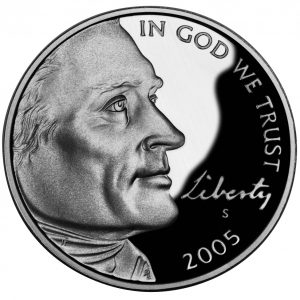 Since the introduction of the 50 State Quarters Program, there have been several changing design series on circulating coinage. All of the programs have been created to honor and celebrate the nation’s history in some way. It started in 1999 with the issuance of the quarter honoring Delaware, the first state to ratify the Constitution granting it the designation of being the first state to enter the Union.
Since the introduction of the 50 State Quarters Program, there have been several changing design series on circulating coinage. All of the programs have been created to honor and celebrate the nation’s history in some way. It started in 1999 with the issuance of the quarter honoring Delaware, the first state to ratify the Constitution granting it the designation of being the first state to enter the Union.
Since 1999, there has been the following coin series issued by the U.S. Mint:
- 2009 Lincoln Bicentennial One Cent Program
- Westward Journey Nickel Series™
- 50 State Quarters Program
- 2009 District of Columbia and U.S. Territories Quarters Program
- America the Beautiful Quarters® Program
- Native American $1 Coin
- Presidential $1 Coins
Although none of these series produced rare coins with the exception of errors and varieties, such as the 2004 Wisconsin extra leaf quarter and the 2005 Minnesota quarter with an extra tree, the only excitement was the novelty generated in 1999 with the new series.
Soon, the American Innovation $1 Coin will join this list. When the American Innovation $1 Coin Act (H.R. 770) finishes its procedural trek through Congress, it will be sent to the other end of Pennsylvania Avenue for the President’s signature. There is no indication that the President will veto this bill.
The 14-year program will honor “American innovation and significant innovation and pioneering efforts of individuals or groups from each of the 50 States, the District of Columbia, and the United States territories.” Four one-dollar coins will be issued each year and issued alongside the Native American Dollar.
Although there is a bias in the numismatic industry against modern coinage, there is a fun aspect of the changing coin designs. Aside from breaking up the monotony, there is an educational aspect that people should take advantage of, even if you have college degrees.
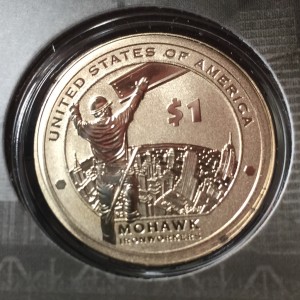
2015-W Native American Dollar Enhanced Uncirculated Reverse celebrating the Mohawk Iron Workers
Mohawk ironworkers were there following the attacks of September 11, 2001, to help clean up and rebuild the World Trade Center site. This is something I would not have known had they not appeared on the coin and asking why.
Regardless of the historical significance of these coins and the underappreciated beauty of the designs, the numismatic industry has not taken the opportunity to promote coin collecting using these changing programs. There is only one reason for the lack of interest from the community: ECONOMICS!
The American Numismatic Association is largely run by dealers who make their living by buying and selling rare coins and bullion. The trade in modern coinage, many items that anyone could find in pocket change, does not have a high rate of return. Therefore, most dealers are not interested.
Although dealers do have the right to earn a living the way they see fit, as part of the overall hobby, they tend to steer away from the modern coins and even downplay their significance to the hobby. This tends to perpetuate a myth that you cannot be a legitimate collector if you collect modern coins.
This attitude is a wasted opportunity for the industry. Aside from being an opportunity to promote the hobby but give people an outlet to learn something more than what they see on the cable news channels.
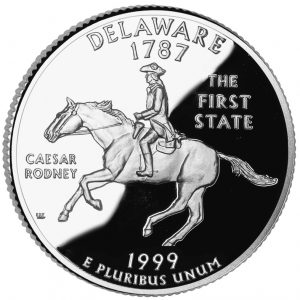 One of the problems with this program can also make it a positive is what will each of the states choose to represent innovation in their state or territory? Promoting numismatics as “history in your hand” can also be a lesson in history to help each state decide what to chose to best represent them on a coin. This is the best opportunity to use numismatics to promote the hobby and history by providing a conduit for discussion in each state.
One of the problems with this program can also make it a positive is what will each of the states choose to represent innovation in their state or territory? Promoting numismatics as “history in your hand” can also be a lesson in history to help each state decide what to chose to best represent them on a coin. This is the best opportunity to use numismatics to promote the hobby and history by providing a conduit for discussion in each state.
What would constitute a state’s great innovation or innovator? Will New Jersey choose Thomas Edison? Will Alexander Graham Bell be Massachusetts’ choice? And what about Pennsylvania? There could be an interesting discussion about honoring Benjamin Franklin, George Westinghouse, or even Andrew Carnegie especially since neither of these men were born in the United States.
There will be a lot of innovation to chose from because there has been a lot of innovation during the country’s 242 years of existence. If you missed the announcement by the United States Patent and Trademark Office (USPTO), they issued the 10 millionth patent on Tuesday, June 19, 2018. And that does not count the patents issued before 1836 when the numbering system was reset by the Patent Act of 1836.
However, the most significant problem with the Innovation $1 Coin is that it is a one-dollar coin. As long as Congress continues to not listen to reason and stops issuing the paper dollar, it does not matter what they do with the coin, it is not going to generate enough interest because the coin will not circulate.
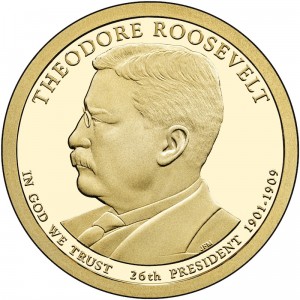 Regardless of how many Government Accountability Office (GAO) reports are issued (GAO-13-164T) or the number of experts that endorse the elimination of the paper dollar for the coin, Congress refuses to address the issue. They point to surveys that show that most of the people older than 50 are against removing the paper dollar. Since this population constitutes the majority of the voters and, more significantly, campaign donors, the politicians are not about to make those people upset.
Regardless of how many Government Accountability Office (GAO) reports are issued (GAO-13-164T) or the number of experts that endorse the elimination of the paper dollar for the coin, Congress refuses to address the issue. They point to surveys that show that most of the people older than 50 are against removing the paper dollar. Since this population constitutes the majority of the voters and, more significantly, campaign donors, the politicians are not about to make those people upset.
In many cases, the Innovation $1 Coin will be a repeat of history. Its potential popularity will fail as Congress hopes to socially engineer excitement in the way they tried to do for the Presidential dollar coins. That was deemed a failure that forced then-Treasury Secretary Tim Geithner to order the U.S. Mint to reduce the production of these coins. This was after certain members of Congress showed its collective stupidy by introducing a bill to prematurely end the program.
There is so much potential for the Innovation $1 Coin to be a great program and to generate publicity for the hobby. But as long as the coin does not circulate and Congress refuses to deal with the situation appropriately, it will be a coin that only existing collectors will take interest in and become a lost opportunity for everyone.
Jul 2, 2018 | coins, commemorative, dollar, legislative, US Mint
Sometimes watching specific legislation to make its way through Congress is like watching paint dry. We know the paint will eventually dry but it takes a lot longer than we have time to wait. With the exception of bills that are proposing useful things like eliminating the paper dollar for a coin, there is no point to check daily.
But that is what I do. I wrote a program to download the bill information produced by the Government Printing Office on behalf of the Congress and store it in a database so that it can be reported here. This process does not become interesting until something happens.
The last two weeks in June looks like it was the equivalent of a wild ride. First, the American Innovation $1 Coin Act (H.R. 770) appeared on the agenda in the House of Representatives where the only “debate” was Rep. Jim Himes (D-CT), the bill’s sponsor, and the day’s floor manager, Rep. Sean Duffy (R-OH) speaking in favor of passage. Then it followed the regular course of passage by the House, passage by the Senate with a change, followed by the House agreeing with the amendment. Next month it should be signed into law by the President.
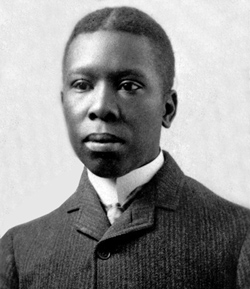
Paul Laurence Dunbar, circa 1890
Paul Laurence Dunbar (1872-1906) was an American poet, novelist, and playwright. Dunbar was very popular in his day whose work was known for its colorful language and conversational tone that made his work seem lyrical. Dunbar, who was born in Dayton, Ohio as a child of former slaves, was famous for writing in the “Negro dialect” that was associated with the antebellum south.
Dunbar had briefly worked at the Library of Congress before resigning to concentrate on his writing. His home in the LeDroit Park neighborhood of Washington, DC still stands today. In 1904 he returned to Dayton to be with his ailing mother but ended up contracting tuberculosis and dying in 1906.
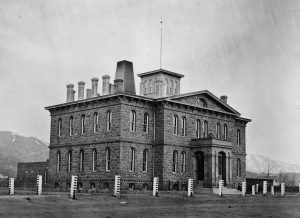
Carson City Mint (1866)
The Carson City Mint opened in 1870 primarily in response to the Comstock Lode. It started as an Assay Office in 1963 but did not gain Mint status until 1870. It was in operation from 1870-1885 and 1889-1893. It is the only branch of the U.S. Mint to have used a two-letter mint mark.
Today, the building is a branch of the Nevada State Museum.
Since the text of both bills has not been published, details of the programs are unknows except it is safe to assume that the Carson City 150th Anniversary commemorative coin program will occur in 2020.
H.R. 770: American Innovation $1 Coin Act
Summary: (Sec. 2) This bill directs the Department of the Treasury, over a 14-year period beginning in 2019, to mint and issue “American Innovation” $1 coins commemorating innovation and innovators from each state, each U.S. territory, and the District of Columbia. Treasury shall issue four coins per year, in alphabetical order by jurisdiction, until a coin has been issued for each jurisdiction. Treasury may mint and issue a $1 coin in 2018 to introduce the series. Neither the bust of any person nor the portrait of any living person may be included in the design of the coins.The bill instructs Interior to continue to mint and issue $1 coins honoring Native Americans and their contributions.
Motion to reconsider laid on the table Agreed to without objection. — Jun 27, 2018
On motion that the House agree to the Senate amendment Agreed to without objection. (text as House agreed to Senate amendment: CR H5786-5787) — Jun 27, 2018
Mr. Hensarling asked unanimous consent to take from the Speaker’s table and agree to the Senate amendment. — Jun 27, 2018
Message on Senate action sent to the House. — Jun 21, 2018
Passed Senate with an amendment by Voice Vote. — Jun 20, 2018
Measure laid before Senate by unanimous consent. — Jun 20, 2018
Senate Committee on Banking, Housing, and Urban Affairs discharged by Unanimous Consent. — Jun 20, 2018
Received in the Senate and Read twice and referred to the Committee on Banking, Housing, and Urban Affairs. — Jan 17, 2018
Motion to reconsider laid on the table Agreed to without objection. — Jan 16, 2018
On motion to suspend the rules and pass the bill, as amended Agreed to by voice vote. — Jan 16, 2018
DEBATE – The House proceeded with forty minutes of debate on H.R. 770. — Jan 16, 2018
Considered under suspension of the rules. — Jan 16, 2018
Mr. Duffy moved to suspend the rules and pass the bill, as amended. — Jan 16, 2018
Referred to the House Committee on Financial Services. — Jan 31, 2017
H.R. 6214: To require the Secretary of the Treasury to mint commemorative coins in recognition of Paul Laurence Dunbar.
Referred to the House Committee on Financial Services. — Jun 25, 2018
H.R. 6221: To require the Secretary of the Treasury to mint coins in commemoration of the Carson City Mint 150th anniversary, and for other purposes.
Referred to the House Committee on Financial Services. — Jun 26, 2018
All images courtesy of Wikimedia Commons.





 → Read more at
→ Read more at  With the discovery of every new technology, there are the inevitable predictions that it will make the old ways obsolete. Although the automobile reduced the reliance on horses, the basics of the internal combustion engine have not changed in over 100 years. Take away the electronics around the engine, the technology increasing the air intake, and cleaning up the exhaust, and you still have an engine block with pistons that go up and down in the classic suck-bang-blow rhythm that was used in the Model T.
With the discovery of every new technology, there are the inevitable predictions that it will make the old ways obsolete. Although the automobile reduced the reliance on horses, the basics of the internal combustion engine have not changed in over 100 years. Take away the electronics around the engine, the technology increasing the air intake, and cleaning up the exhaust, and you still have an engine block with pistons that go up and down in the classic suck-bang-blow rhythm that was used in the Model T.
